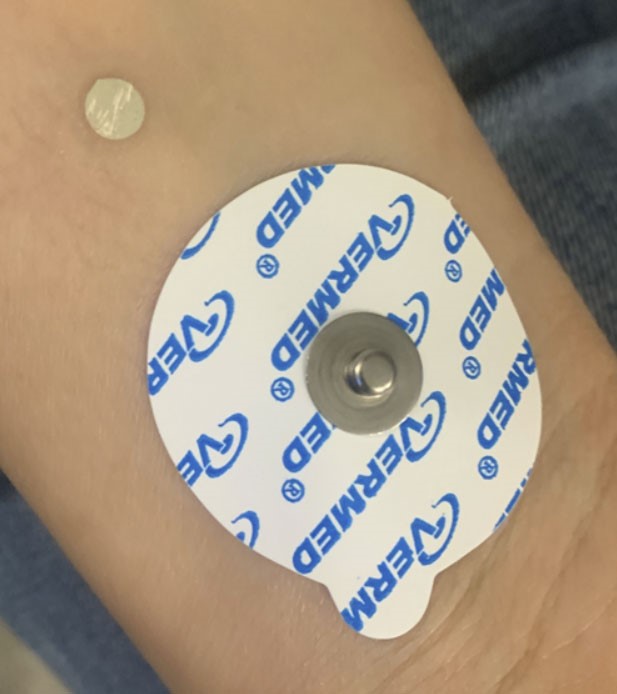Comparison of printed tattoo electrodes for biomedical applications
Experimenting in the world of Flexible Hybrid Electronics (FHE) comes with a variety of hurdles. Printing technologies are vastly different in terms of materials compatibility and have pros and cons that make them suitable for particular applications.
Choosing materials that match the printing technology you intend to use is the most important decision you’re going to make.
NOVA, Voltera’s direct-ink write (DIW), precision dispensing, and 3D printing platform for printed electronics, changes the landscape on which the field of FHE is built. Providing the opportunity to experiment with any screen printable material, and customise and re-design patterns on the fly, NOVA allows a materials flexibility that has never been experienced before.
“Additive manufacturing is transforming what electronics are, as well as their role in the world around us. If you want to print on a thermoplastic stretchable elastomer, like a rubbery material, with NOVA – you can do that. And all of a sudden you have an electronic device that has the mechanical properties of the skin. This is something that was never possible before with traditional electronics,” said Matt Ewertowski, Product Manager at Voltera, during a Made in Ontario podcast interview with Professor Gerd Grau, Director of the E-AM lab at York University.
As additive electronics technology evolves, researchers like Professor Grau and his group are pushing the boundaries of how the additive manufacturing process can revolutionise the design of products in industries across the board.
Professor Grau and Master’s student Yoland El-hajj began exploring the potential of extrusion printing, also known as direct-write technology, to fabricate tattoo electrodes. Existing sensor technology used in the medical industry can be cumbersome, heavy, and uncomfortable for patients – especially when it needs to be worn for long periods of time.
Research in printed biomedical tattoos has previously relied on traditional fabrication methods, which are costly and complex, and the majority of the electrode tattoos use organic materials with low conductivity. After identifying this gap in the microfabrication of printed medical electrodes, El-hajj sought to explore the potential for more accessible and efficient microfabrication processes – specifically, extrusion printing.
Inkjet and Extrusion Printed Silver Biomedical Tattoo Electrodes is a preprint of El-hajj’s final thesis paper, submitted for publication in a journal for July 2022. It examines the quality of biomedical tattoo electrodes fabricated using NOVA and DIW technology in comparison with those made via a more traditional route, like inkjet technology.
The two print methods were optimised to print silver-based conductive inks on tattoo paper and the resulting tattoo electrodes were compared by their sheet resistance, impedance, and mechanical performance in terms of bending strain. El-hajj and her team used silver-based inks due to their high conductivity, mechanical robustness, biocompatibility, and cost.

(Image) Extrusion printed silver tattoo electrode (top) and conventional snap electrode (bottom)
The results of El-hajj and her teams research indicates that traces printed using DIW technology have improved sheet resistance and impedance when compared to traces printed using inkjet technology.
The proposed mechanism for these differences is because the viscosity of DIW conductive inks is significantly higher than inks used in inkjet technology which are low viscosity and have a relatively high proportion of solvent. DIW inks are therefore not absorbed as readily by the tattoo paper used as the substrate, which allows for more robust electrical traces and improved conductivity in comparison to inkjet inks.
“There is a large potential for the fabrication of medical electrodes using printing methods, and with the use of more robust materials. Printing-based techniques can provide numerous benefits for medical sensors, such as flexibility in the materials and patterns and personalisation of the sensor structure. In addition, more electrically and mechanically robust materials can be implemented using flexible materials,” says El-hajj.
Advancements in additive electronics manufacturing processes are enabling scientists, researchers, and product developers to push the boundaries of electronics innovation, due in part to the variety of materials you can print with and print on.
Through experimentation with different materials and applications, NOVA users – Including Professor Grau’s research team – are studying and developing additive manufacturing techniques to create a new generation of electronics with transformative potential.










